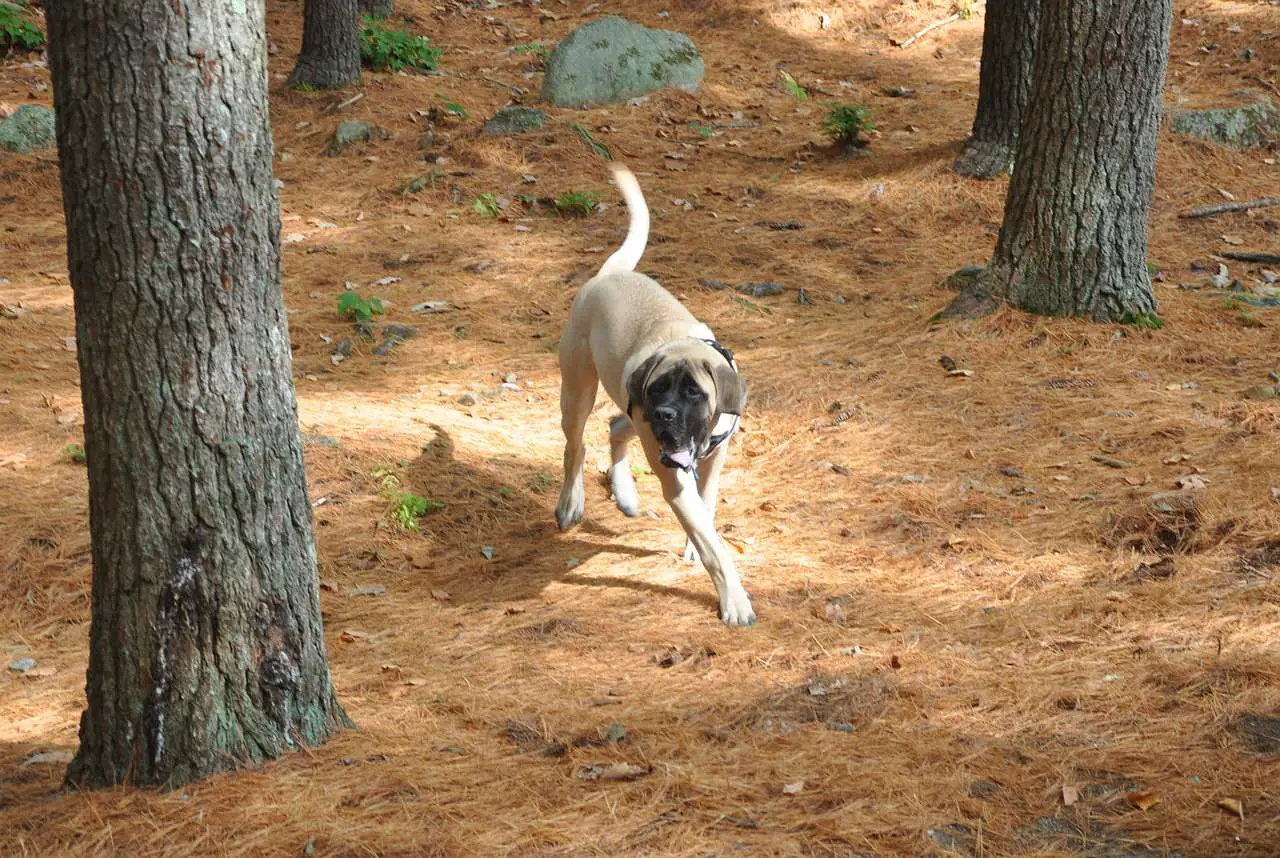Molosser vs Mastiff: Knowing the key differences

Molossers and Mastiffs are two types of large breed dogs that are often confused with each other. Whilst it’s true that they share some similarities such as their origins in noble roots, there are in fact some important differences between the two.
Comparing Molosser vs Mastiff is nuanced. Both types of dog share a bunch of similar qualities, character traits and many similarities in appearance.
However, the key points of difference are easy to understand as you’ll find out for yourself as you read below.
Molosser Dogs
Molossers are said to have originated as war dogs and guard dogs in Ancient Greece. Their name comes from the Molossians – a Greek tribe who adored these four-legged fighters. They encompass several large dog breeds including Mastiffs, Rottweilers, Cane Corso, Dogue de Bordeaux, and even often considered more friendly breeds such as the Saint Bernard.
Physical traits of Molosser Dogs
- Large, heavily boned, powerful muscular builds
- Weighing up to 120 lbs (top end)
- Broad heads with hanging folds and dewlaps
- Dark colored eyes
- Pendulous lips that drool
- Powerful jaws and a significant bite force
Temperament & Character Traits of Molosser Dogs
- Loyal, brave, strong-willed
- Steady, self-composed, confident
- At risk of aggression without proper socialization (the same for many breeds)
Mastiff Dogs
Mastiffs also trace their roots back to the mighty Molosser lineage. But breeders selectively created an even larger, brawnier breed solely for guardianship and companionship rather than warfare. And their size? We’re talking GIANT!
Modern Mastiff breeds like wrinkly English and Neapolitan Mastiffs, athletic Bullmastiffs, and fluffy Tibetan Mastiffs embody this ultra-large frame, but with an often more relaxed temperament. Some members of the Mastiff family love nothing more than lounging and lumbering around, and are simply happy to follow their special humans everywhere. That signature Mastiff loyalty remains strong as ever!
Physical traits of Mastiff Dogs
- Enormous size, massively built and powerful
- Can weigh up to 250lbs (at top end)
- Heavily wrinkled heads
- Usually darker masks around eyes and muzzle
- Muscular, athletic yet lumbering gaits
- Extra skin and dewlaps around neck
Temperament & Character Traits of Mastiff Dogs
- Devoted, calm, dignified
- Confident and courageous
- Often considered more easy going than other Molosser breeds
Key Differences: Molosser vs Mastiff
So what are the key differences between the Molosser and Mastiff breeds?
Nuance hides in this answer. In short: all mastiffs are Molossers, but not all Molossers are mastiffs. Mastiffs are uniquely giant dogs bred for their loving companionship rather than just guarding behavior.
When speaking to the specifics:
- Mastiffs are a specific type of Molosser
- Mastiffs are even larger and heavier than other Molosser breeds
- Mastiffs have more exaggerated wrinkles and extra skin folds
- Mastiffs tend to have more docile, relaxed temperaments
| Trait | Molossers | Mastiffs (types of molossers) |
| Size | Large | Giant |
| Build | Muscular | Massive |
| Wrinkles | Some loose skin | Exaggerated wrinkles |
| Temperament | Strong-willed, steady | Calm, dignified |
- Molossers are a broad group of large, muscular dogs originally bred for warfare and guarding, including breeds like Rottweilers, Saint Bernards, and more. Mastiffs descend from Molossers but were bred specifically for size and companionship rather than aggression.
- Mastiffs are even larger and heavier than other molosser breeds. They have very massive, wrinkly builds while most molossers are more athletic.
- Mastiffs tend to have more exaggerated loose skin and wrinkles around their face and necks compared to other Molosser breeds. This gives them their signature droopy and wrinkly look.
- Mastiffs typically have more mild, docile temperaments since they were bred as companions rather than aggressive guard dogs. They are usually calmer and less strong-willed than Molosser breeds.